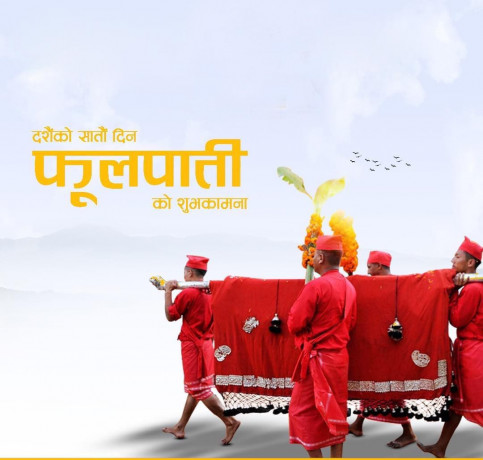Fulpati: A Sacred Tradition in Nepal's Dashain Festival Professional
Oct 10th, 2024 at 10:28 Blogs Kathmandu 771 views Reference: 1578Location: Kathmandu
Price: Contact us
Fulpati, one of the major highlights of Nepal’s grand festival Dashain, carries deep religious and cultural significance. Celebrated on the seventh day of Dashain, Fulpati is more than just a ritual — it symbolizes the arrival of auspiciousness, peace, and blessings into homes and communities across Nepal. With its roots in ancient Hindu traditions, this day marks a moment of unity for the nation as it draws families together to honor their culture and deities.
The Significance of Fulpati
In the context of Dashain, which spans fifteen days, Fulpati represents a turning point in the celebrations. The name "Fulpati" translates to "sacred flowers and plants." It refers to an assortment of holy items, including flowers, banana stalks, sugarcane, and Jamara (sacred grass), which are symbolic of nature's blessings. These items are collected and offered to the goddess Durga, the divine mother who is worshipped during Dashain for strength and protection.
Fulpati is also a reminder of the connection between nature, spirituality, and life itself. The ritual brings the message that harmony with nature is essential for well-being and prosperity, as it seeks the blessings of the goddess for good health, fortune, and the protection of the family.
The Ritual of Fulpati
Traditionally, Fulpati is celebrated with great fervor in the Kathmandu Valley and across the nation. The day begins with a procession where the sacred items are carried from the ancestral royal palace in Gorkha to Kathmandu. This journey of Fulpati to the capital city was an age-old tradition of the Shah kings, though it continues today in a ceremonial manner.
Upon reaching Hanuman Dhoka in Kathmandu Durbar Square, the Fulpati is taken to the Dashain Ghar of the palace, where it is received with due reverence. In the royal context, priests conduct the rituals, reciting sacred mantras to invoke the blessings of goddess Durga. While the grandeur of the royal celebrations has evolved, the essence remains the same — Fulpati is a reminder of Nepal's rich heritage and the unbroken connection to its traditions.
In homes across the country, families also welcome Fulpati into their houses with prayers and offerings. The Jamara grass, planted earlier during Ghatasthapana (the first day of Dashain), is now seen sprouting and is placed in the main prayer rooms of houses. Along with the sacred flowers and plants, this is a day when families prepare for the final phase of Dashain, leading up to the grand celebrations of Maha Asthami, Maha Navami, and Vijaya Dashami.
The Cultural Impact of Fulpati
Fulpati fosters a sense of national unity. While the day has religious roots, it transcends beyond specific sects of Hinduism, bringing together Nepalese from various cultural backgrounds. Communities engage in festive activities, and the marketplaces are lively with people shopping for Dashain supplies.
For the Nepalese people, Fulpati is not just about fulfilling religious obligations but also about strengthening social bonds. It is a time for family gatherings, reconnecting with distant relatives, and celebrating togetherness.
Conclusion
Fulpati, as part of the Dashain festival, represents Nepal’s deep-rooted spiritual connection to nature and the goddess Durga. It is a day of blessings and joy, a time when families come together to seek divine protection and celebrate the bounties of life. The rich traditions associated with Fulpati reflect the values of respect for nature, family unity, and cultural pride that continue to resonate strongly across generations in Nepal.


